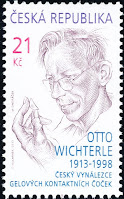 Czechs are big time dog lovers. Something like 25%-30% of Czechs own a dog. The most popular dogs across the country are German shepherds, dachshunds, Labradors and golden retrievers.
Czechs are big time dog lovers. Something like 25%-30% of Czechs own a dog. The most popular dogs across the country are German shepherds, dachshunds, Labradors and golden retrievers.
Dogs are welcomed more places than they are in the USA. It's not uncommon to see dogs sitting under the table at cafes, pubs, and restaurants. And I'm not talking about service animals. People take their dogs almost everywhere.
 If dogs aren't allowed then there's usually a sign on the door indicating that dogs aren't allowed. Large grocery stores, museums, castles, churches, and some restaurants are places that usually restrict entry except for service animals.
If dogs aren't allowed then there's usually a sign on the door indicating that dogs aren't allowed. Large grocery stores, museums, castles, churches, and some restaurants are places that usually restrict entry except for service animals.
If you take a dog to a pub or restaurant, the waiter will normally bring the dog a bowl of water without even being asked.
 Dogs here tend to be better socialised than in the USA. Dogs are well trained and because they are used to being out in public without any problems they continue to be become even better behaved.
Dogs here tend to be better socialised than in the USA. Dogs are well trained and because they are used to being out in public without any problems they continue to be become even better behaved.
Now this is Czechland so there are rules and bureaucracy to deal with.
You have to purchase a ticket for the dog to ride public transportation. When on public transport the dog must wear a muzzle. Or if it's a small dog then no muzzle is required if the dog is in an enclosed pet carrier.
People here are pretty good about picking up after their dogs. I expect that there's a huge fine if you don't but I don't know how much it is.
All dogs must be registered with the city authorities. Registration fees are paid for each dog older than three months. The owner is required to register the dog within 15 days of getting the dog. If you take a dog from a shelter then you are exempt from registration fees for the first year. The fees can vary depending if you live in a flat or a family house. The fees are also lower if you are a pensioner.
I'm told that Brno has the most complicated fees in the entire country because each of the city's 29 districts have their own rules. Here are the fees if you live in the city centre.
If you live in a flat then the basic registration fee for a single dog is 1500 Kč ($67). For additional dogs it is 2250 Kč ($101). If you live in a family house then it is 600 Kč ($27) for the first and 900 Kč ($40) for the additional dogs. If you are a pensioner then the fees are only 200 Kč ($9) and 300 Kč ($13).
If you don't pay your registration fees on time then the fine is three times the original cost. If your dog passes away then your are required to inform the authorities.
 The Veterinary Act was amended so that as of 1 January 2020, all dogs older than six months must be chipped. The fee to chip your dog is normally 400-450 Kč ($18-$20). I though chips had been mandatory before but maybe there were exceptions allowed. The fine for not chipping your dog was increased from 10.000 Kč ($450) to 20.000 Kč ($900).
The Veterinary Act was amended so that as of 1 January 2020, all dogs older than six months must be chipped. The fee to chip your dog is normally 400-450 Kč ($18-$20). I though chips had been mandatory before but maybe there were exceptions allowed. The fine for not chipping your dog was increased from 10.000 Kč ($450) to 20.000 Kč ($900).






















































